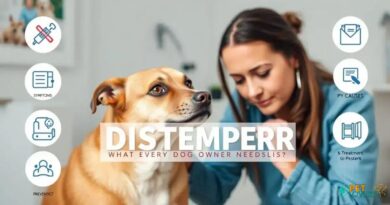O que é grain-free diets
What Are Grain-Free Diets?
Grain-free diets for dogs have gained popularity in recent years, primarily due to the increasing awareness of pet nutrition. These diets eliminate grains such as wheat, corn, and rice, which are common ingredients in many commercial dog foods. Instead, they focus on high-quality protein sources and alternative carbohydrates, such as sweet potatoes, peas, and lentils. This shift aims to cater to dogs that may have grain sensitivities or allergies, providing them with a more suitable dietary option.
The Benefits of Grain-Free Diets
One of the main advantages of grain-free diets is the potential reduction of allergic reactions in dogs. Many dogs suffer from food allergies, and grains are often a culprit. By removing grains from their diet, pet owners may notice improvements in their dog’s skin condition, coat quality, and overall health. Additionally, grain-free diets can offer higher protein content, which is essential for maintaining muscle mass and energy levels in active dogs.
Common Ingredients in Grain-Free Dog Foods
Grain-free dog foods typically include a variety of protein sources, such as chicken, beef, fish, and lamb. These proteins are often complemented by alternative carbohydrate sources like sweet potatoes, peas, and chickpeas. Furthermore, many grain-free diets incorporate fruits and vegetables, providing essential vitamins and minerals that contribute to a balanced diet. This combination of ingredients aims to mimic a more natural diet that dogs would have consumed in the wild.
Potential Concerns with Grain-Free Diets
Despite their benefits, grain-free diets have sparked some controversy, particularly regarding their potential link to canine dilated cardiomyopathy (DCM). Some studies suggest that certain grain-free diets, especially those high in peas and lentils, may be associated with an increased risk of DCM in dogs. Pet owners should consult with their veterinarians before making significant dietary changes to ensure their dog’s health and well-being.
How to Transition to a Grain-Free Diet
Transitioning your dog to a grain-free diet should be done gradually to avoid digestive upset. Start by mixing a small amount of the new grain-free food with your dog’s current food, gradually increasing the proportion of the new food over a week or two. This slow transition allows your dog’s digestive system to adjust to the new ingredients, minimizing the risk of gastrointestinal issues.
Choosing the Right Grain-Free Dog Food
When selecting a grain-free dog food, it’s essential to read the ingredient list carefully. Look for high-quality protein sources as the primary ingredient and avoid foods with excessive fillers or artificial additives. Additionally, consider your dog’s specific dietary needs, such as age, size, and activity level, to ensure that the chosen food provides balanced nutrition tailored to their requirements.
Grain-Free Diets and Weight Management
Grain-free diets can be beneficial for weight management in dogs, as they often contain fewer carbohydrates and more protein. This can help dogs feel fuller for longer, reducing the likelihood of overeating. However, pet owners should monitor their dog’s weight and adjust portion sizes accordingly, as some grain-free foods can be calorie-dense. Regular exercise is also crucial for maintaining a healthy weight.
Consulting with a Veterinarian
Before making any significant changes to your dog’s diet, it’s always best to consult with a veterinarian. They can provide personalized recommendations based on your dog’s health history, dietary needs, and any specific concerns you may have. A veterinarian can also help you determine if a grain-free diet is appropriate for your dog and guide you in selecting the best food options.
Understanding Your Dog’s Nutritional Needs
Every dog is unique, and their nutritional needs can vary based on factors such as age, breed, and activity level. While grain-free diets can be beneficial for some dogs, they may not be suitable for all. It’s essential to understand your dog’s specific requirements and monitor their health and well-being closely. Regular check-ups with your veterinarian can help ensure that your dog is receiving the proper nutrition for a long and healthy life.



